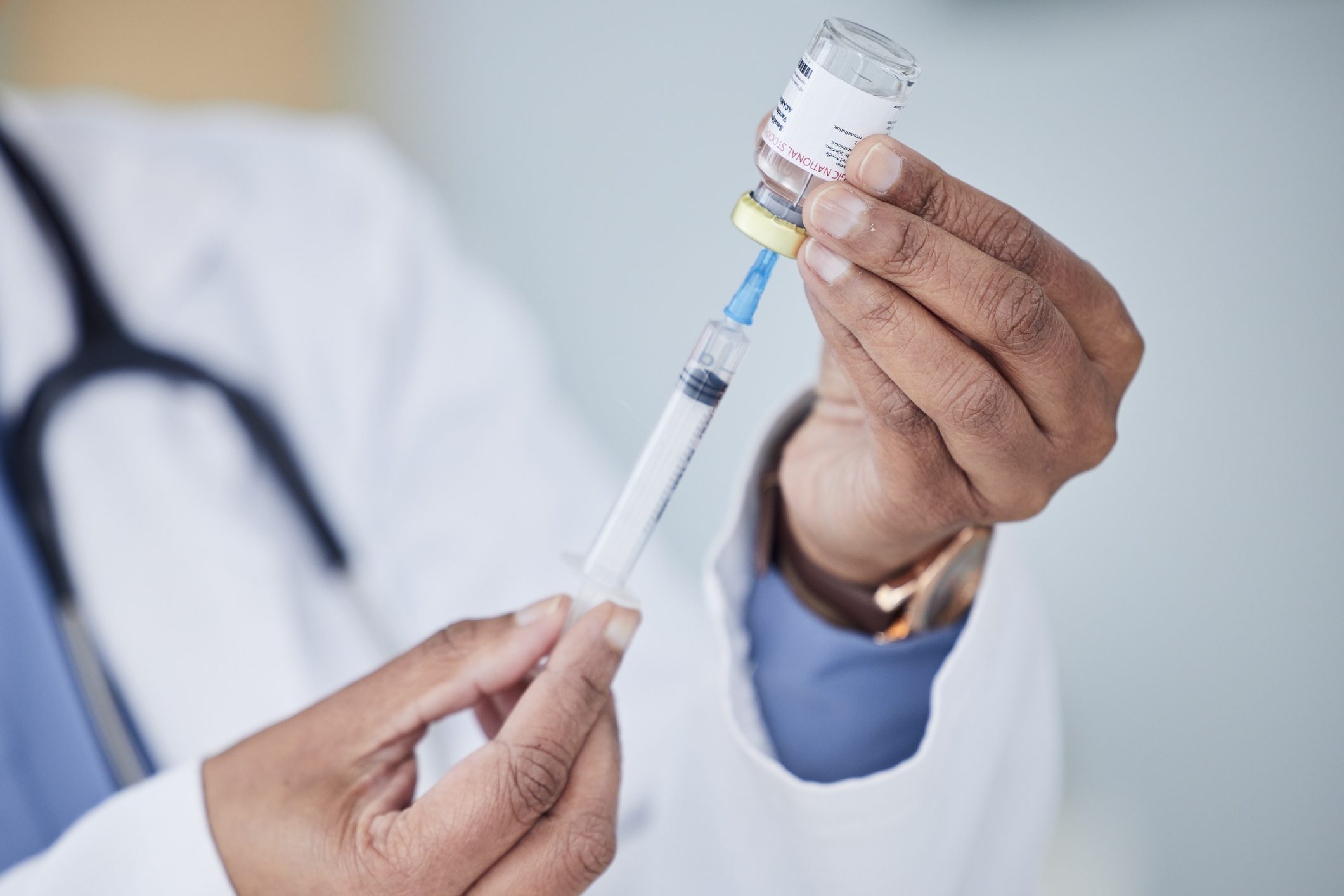The average American eats 152 pounds of sugar—along with 146 pounds of flour that converts to sugar in your body—every year. Combined, that’s about a pound of sugar every day!1 You're probably aware that sugar in all its many forms can contribute to obesity and other health problems.
Fewer people know how sugar can take its toll on your skin. As your body’s largest organ, your skin has numerous jobs, including:
- Protecting against ultraviolet (UV) radiation, microorganisms, chemicals, and physical damage.
- Preventing dehydration, infection, and other harmful environmental impacts.
- Regulating body temperature by sweating and adjusting blood flow to the surface.
- Providing sensory receptors that respond to touch, pressure, temperature, and pain. These receptors transmit signals to the brain, which allow you to perceive and respond to different environmental stimuli.
- Helping the body eliminate toxins, such as through sweating.
How Your Skin Changes as You Age
Vibrant, healthy skin depends on the right proteins, including collagen and elastin. Collagen provides structure and support to the skin, while elastin fibers allow it to stretch and bounce back to its original shape.
As you age, skin loses collagen and elastin fibers. After 20, your body makes about 1% less collagen every year.2 Likewise, levels of elastin decrease with age.3 When these fibers break down, wrinkles, fine lines, blemishes, and other signs of aging, including what we call the “sugar sag phenomenon,” can result.
You can’t turn back the clock, but there’s plenty you can do to prevent this damage. Targeting sugar is the place to start. When you’re eating more sugar than your body can handle (and it doesn’t take much), glucose molecules can bind to collagen and elastin, causing them to become stiff and less elastic.
How Sugar Makes Your Skin Sag
Yes, sugar can make your skin sag. It can lead to premature aging, blemishes, wrinkles, and other imperfections that no skincare cream can resolve. Here are five reasons why.
Sugar Can Create Insulin Resistance
Your body breaks down sugar into glucose and fructose. Insulin delivers glucose into almost all of your cells to store or use for fuel. Too much sugar can cause the body's cells to become less sensitive to insulin, “resisting” its signal and leading to insulin resistance.
Fructose, on the other hand, beelines straight to your liver. When it gets bombarded with excess sugar, it can become resistant (just like any other organ can).4
How does that impact your skin? Insulin resistance can increase the production of sebum, an oily substance that your skin produces to stay moisturized and protected. Excess sebum production can lead to clogged pores, acne, and other skin damage.5
Sugar Can Increase Inflammation
Insulin resistance and chronic inflammation go together, which can further damage collagen and elastin fibers by triggering the production of enzymes that break down these fibers. Chronic inflammation also increases free radicals that can damage your skin. As a result, wrinkles, sagging, and skin problems become more common.
I often write about the damaging effects of this dangerous, low-grade inflammation, including increasing your risk of obesity as well as nearly every disease.6 What hurts other parts of your body can also impact your skin. Scientists have even coined the phrase “inflammaging” to describe the low-grade inflammation that increases damaging free radicals and harmful enzymes that can age every organ, including your skin.7
Excess sugar plays a key role in creating and exacerbating chronic inflammation.8 Eating too much sugar can increase inflammatory markers and inflammatory cytokines. These proteins are produced by the immune system to manage inflammation and other processes. When excess sugar knocks them out of balance, it can cause chronic inflammation.9
As a result, skin aging, wrinkles, sagging, and other skin problems become more common.10 Chronic inflammation can also increase your risk of acne and other skin conditions.11
Sugar Can Create Damaging Free Radicals
Chronic inflammation doesn’t occur in a vacuum. This low-grade inflammation triggers the release of damaging free radicals, which I mentioned earlier. These harmful molecules do double damage by breaking down collagen and elastin fibers while decreasing the production of new fibers. The result: sagging, dull skin.12
Sugar can increase the production of those free radicals. When they overpower your body’s antioxidant defense system, a condition called oxidative stress results. Oxidative stress plays a major role in the aging process, contributing to wrinkles, fine lines, sagging, and other skin problems.13
According to Kirsten Nunez, MS, in Mind Body Green, dark spots, discoloration, reduced abilities to keep out harmful organisms and keep skin hydrated, and increased sensitivity are other hits that oxidative stress can take to your skin.14
Sugar Can AGE You
When you consume sugar, glucose molecules attach to proteins in your body through a process called glycation. Glycation can damage collagen and elastin fibers, making them stiff and less functional. It's an ugly process, and its end result is even worse. Glycation leads to the formation of advanced glycation end products (AGEs).15
The acronym is wildly accurate: AGEs are highly reactive and can bind to cellular receptors, contributing to or exacerbating chronic inflammation and oxidative stress. (Are you starting to see the vicious cycle that excess sugar creates?)
AGEs can also form strong connections with proteins (scientists call this cross-linking) – leading to the formation of stiff, insoluble protein structures that make your skin saggy or otherwise look prematurely old.16 As AGEs lead to the breakdown of collagen fibers, skin problems including weakened tissues, wrinkles, and other signs of aging occur.
To be fair, other factors including how you prepare your meat also contribute to AGEs. (Grilling, frying, and roasting produce much higher levels of AGEs than water-based cooking methods such as boiling and steaming.)17 But sugar is a big driver of AGEs, too.
Sugar Can Interfere With Hyaluronic Acid Production
You may have seen hyaluronic acid in your favorite skincare products. This substance helps keep your skin's surface moisturized, increasing hydration levels and maintaining a barrier to protect skin from pollution and other environmental stressors.
Too much insulin, brought about by high sugar intake, can increase the activity of hyaluronidases, enzymes that break down hyaluronic acid.18 As a result, your skin can feel dry and look dull. What’s more, inflammation created by insulin resistance can interfere with the production of hyaluronic acid, which can lead to parched, pallid, sagging skin.
Breaking Free of Sugar Addiction
There's plenty you can do to maintain glowing skin and reduce sagging, wrinkling, and other imperfections. Reducing sun exposure, which can damage collagen and elastin fibers, can help. So can staying hydrated, exercising consistently, addressing nutrient deficiencies, and eating by the plate.
But one of the biggest ways to stop skin sagging is by becoming aware of how much sugar you’re getting. If you’re eating healthily but you struggle with issues like maintaining vibrant skin, hidden sugars may be the culprit.
Sneaky sugars hide in surprising places, including fruit, enhanced waters, and salad dressings. Even when you’re hypervigilant, it’s hard to know all the places they take cover or how to avoid them. Researchers have found more than 50 names for sugar!
That’s why I wrote the Sugar Impact Diet, which lets you break free of the grip sugar has on you. I teach you how to tame your sweet tooth, appreciate the subtle sweetness of food, and break free of sugar addiction without going cold turkey or otherwise depriving yourself.
People who’ve followed the Sugar Impact Diet had amazing results—most lost 10 pounds in just two weeks! And they feel better than they have in years. Symptoms that we’re all told to believe are the normal signs of aging, like bloating, exhaustion, and joint pain, simply disappeared.
References:
- Dr. Hyman: Separating Fat from Fiction: 10 Fat Facts You Need to Know
- Scientific American®: Why does skin wrinkle with age? What is the best way to slow or prevent this process?
- Baumann L, Bernstein EF, Weiss AS, Bates D, Humphrey S, Silberberg M, Daniels R. Clinical Relevance of Elastin in the Structure and Function of Skin. Aesthet Surg J Open Forum. 2021 May 14;3(3):ojab019. doi: 10.1093/asjof/ojab019. PMID: 34195612; PMCID: PMC8239663.
- Softic S, Stanhope KL, Boucher J, Divanovic S, Lanaspa MA, Johnson RJ, Kahn CR. Fructose and hepatic insulin resistance. Crit Rev Clin Lab Sci. 2020 Aug;57(5):308-322. doi: 10.1080/10408363.2019.1711360. Epub 2020 Jan 14. PMID: 31935149; PMCID: PMC7774304.
- Sadowska-Przytocka A, Gruszczyńska M, Ostałowska A, Antosik P, Czarnecka-Operacz M, Adamski Z, Łącka K. Insulin resistance in the course of acne – literature review. Postepy Dermatol Alergol. 2022 Apr;39(2):231-238. doi: 10.5114/ada.2021.107101. Epub 2021 Jun 18. PMID: 35645675; PMCID: PMC9131965.
- Pahwa R, Goyal A, Jialal I. Chronic Inflammation. 2022 Aug 8. In: StatPearls [Internet]. Treasure Island (FL): StatPearls Publishing; 2022 Jan–. PMID: 29630225.
- Zhuang Y, Lyga J. Inflammaging in skin and other tissues – the roles of complement system and macrophage. Inflamm Allergy Drug Targets. 2014;13(3):153-61. doi: 10.2174/1871528113666140522112003. PMID: 24853681; PMCID: PMC4082166.
- Ma X, Nan F, Liang H, Shu P, Fan X, Song X, Hou Y, Zhang D. Excessive intake of sugar: An accomplice of inflammation. Front Immunol. 2022 Aug 31;13:988481. doi: 10.3389/fimmu.2022.988481. PMID: 36119103; PMCID: PMC9471313.
- Ma X, Nan F, Liang H, Shu P, Fan X, Song X, Hou Y, Zhang D. Excessive intake of sugar: An accomplice of inflammation. Front Immunol. 2022 Aug 31;13:988481. doi: 10.3389/fimmu.2022.988481. PMID: 36119103; PMCID: PMC9471313.
- Thornfeldt CR. Chronic inflammation is etiology of extrinsic aging. J Cosmet Dermatol. 2008 Mar;7(1):78-82. doi: 10.1111/j.1473-2165.2008.00366.x. PMID: 18254816.
- Meixiong J, Ricco C, Vasavda C, Ho BK. Diet and acne: A systematic review. JAAD Int. 2022 Mar 29;7:95-112. doi: 10.1016/j.jdin.2022.02.012. PMID: 35373155; PMCID: PMC8971946.
- Silva SAME, Michniak-Kohn B, Leonardi GR. An overview about oxidation in clinical practice of skin aging. An Bras Dermatol. 2017 May-Jun;92(3):367-374. doi: 10.1590/abd1806-4841.20175481. PMID: 29186250; PMCID: PMC5514578.
- Rinnerthaler M, Bischof J, Streubel MK, Trost A, Richter K. Oxidative stress in aging human skin. Biomolecules. 2015 Apr 21;5(2):545-89. doi: 10.3390/biom5020545. PMID: 25906193; PMCID: PMC4496685.
- Mind Body Green: What Is Oxidative Stress & What Does It Do to Skin? Our Deep Dive
- Nguyen HP, Katta R. Sugar Sag: Glycation and the Role of Diet in Aging Skin. Skin Therapy Lett. 2015 Nov;20(6):1-5. PMID: 27224842.
- Danby FW. Nutrition and aging skin: sugar and glycation. Clin Dermatol. 2010 Jul-Aug;28(4):409-11. doi: 10.1016/j.clindermatol.2010.03.018. PMID: 20620757.
- Uribarri J, Woodruff S, Goodman S, Cai W, Chen X, Pyzik R, Yong A, Striker GE, Vlassara H. Advanced glycation end products in foods and a practical guide to their reduction in the diet. J Am Diet Assoc. 2010 Jun;110(6):911-16.e12. doi: 10.1016/j.jada.2010.03.018. PMID: 20497781; PMCID: PMC3704564.
- Gorski DJ, Petz A, Reichert C, Twarock S, Grandoch M, Fischer JW. Cardiac fibroblast activation and hyaluronan synthesis in response to hyperglycemia and diet-induced insulin resistance. Sci Rep. 2019 Feb 12;9(1):1827. doi: 10.1038/s41598-018-36140-6. PMID: 30755628; PMCID: PMC6372628.
*These statements have not been evaluated by the Food & Drug Administration. Products mentioned are not intended to diagnose, treat, cure, or prevent any disease. The views in this blog by JJ Virgin should never be used as a substitute for professional medical advice. Please work with a healthcare practitioner concerning any medical problem or concern.





